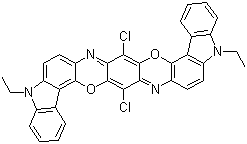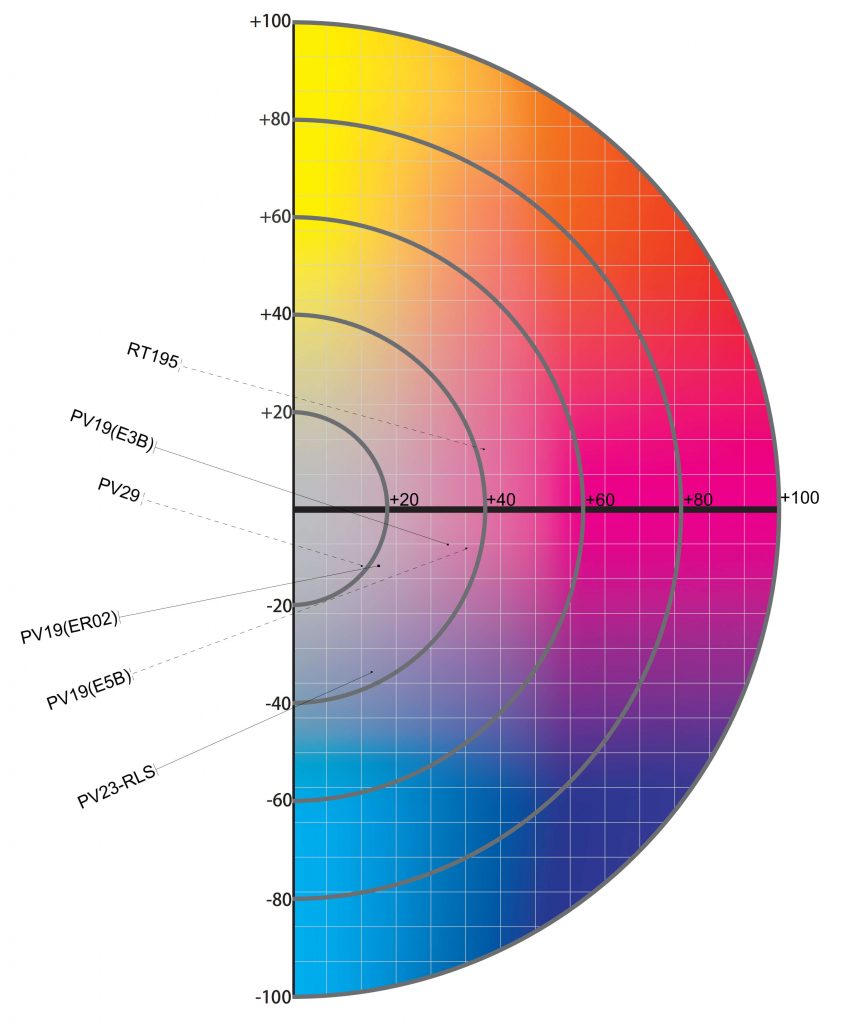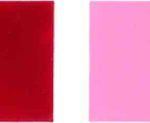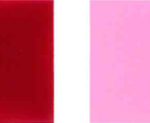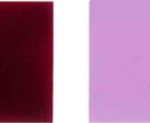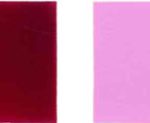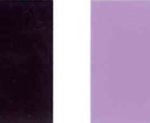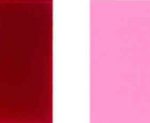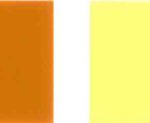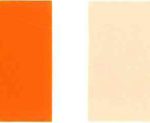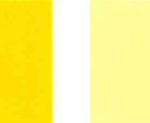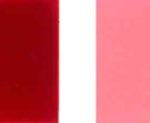Pigment violet 23-Corimax Violet RLS
Pigmentul violet 23 este un compus organic care este un pigment comercial. Este membru al familiei dioxazinelor de compuși heterociclici, dar derivă din carbazoli. Se prepară prin condensarea cloranilului și a 3-amino-N-etilcarbazolului. Are o structură unghiulară centrosimetrică. Timp de mulți ani, structura a fost atribuită, incorect, ca având o „structură liniară” (EC nr. 228-767-9, CAS RN 6358-30-1) care diferă în ceea ce privește fuziunea inelului carbazol.
Pigmentul violet 23 este preparat prin condensarea unei aniline cu cloranil.[De la Wiki]
Parametrii tehnici ai Pigment violet 23
| Indicele culorilor Nr. | Violet pigment 23 |
| Numele produsului | Corimax Violet RLS |
| Categorie produs | Pigment organic |
| Rezistența la lumină (acoperire) | 7 |
| Rezistența la căldură (acoperire) | 200 |
| Rezistența la lumină (plastic) | 7 |
| Rezistența la căldură (plastic) | 250 |
Culoare | 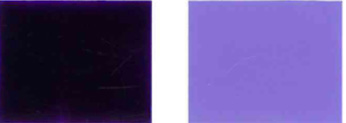 |
| Distribuție de nuanțe |
Zeyachem este un furnizor global de pigmenți Dioxazine Violet care oferă o nuanță violet albăstrui, o culoare care nu poate fi obținută de alți pigmenți.
Puterea extrem de ridicată a culorii Pigment violet 23 îl face un pigment potrivit ca componentă de umbrire. PV23 prezintă, de asemenea, proprietăți excelente de rezistență la căldură și rezistență la lumină, făcându-l potrivit pentru cerneluri și multe aplicații de vopsele și acoperiri.
Corimax Violet RLS este un pigment cu nuanță de albastru roșiatic Dioxazine Violet (PV23) cu rezistență foarte mare a culorii și proprietăți excelente de rezistență generală, potrivit pentru cerneluri, vopsele și acoperiri, inclusiv acoperiri industriale, vopsele pulbere și vopsele pentru automobile.
Caracteristici:
vâscozitate scăzută, luciu ridicat, rezistență ridicată a culorii. Pigment Violet 23 este un pigment violet violet transparent cu putere mare de saturație și nuanță.
CIPigment Violet 23 prezintă o rezistență bună la nuanțare în PVC flexibil, în timp ce rezistență slabă la imigrare.
Rezistența la căldură PV23 peste 230 ℃ în poliolefine, atunci când este utilizat în PS transparent, temperatura va fi sub 220 ℃, peste acest PV 23 se va descompune. Când este lucrat în poliester, este stabil la 280 ℃ în 5 ore, în timp ce concentrația va depăși 0,05%.
Pigmentul este ușor de utilizat și nu necesită clătire. Pentru a asigura o intensitate maximă a culorii și o aderență adecvată la pulpă, trebuie adăugat un agent de reținere la pulpă înainte de aplicarea pigmentului. Pigmenții noștri sunt furnizați pe dimensiuni de volum. Greutatea reală variază, în funcție de densitatea pigmentului.
Aplicație:
Recomandat pentru vopsele auto, acoperiri arhitecturale, acoperiri cu serpentine, vopsele industriale, acoperiri cu pulbere, paste de imprimare, PVC, cauciuc, PS, PP, PE, PU, cerneluri offset, cerneluri pe bază de apă, cerneluri cu solvent, cerneluri UV.
Pigmentul Violet 23 (PV 23) există acum de mai bine de 55 de ani. Începuturile sale datează din 1928, când a fost depus un brevet pentru pigment după ce cercetătorii de la compania Hoechst din Germania au întreprins pentru prima dată sinteza în mai multe etape pe bază de carbazol, un ingredient al coaltarului și cloranil. Până la sfârșitul celui de-al Doilea Război Mondial, pigmentul a fost folosit doar pentru a prelucra diamina albastru deschis, un colorant direct pentru bumbac.
Odată cu inventarea coloranților reactivi, care au simplificat considerabil procesul de vopsire și imprimare a fibrelor celulozice, această aplicație și-a pierdut importanța. O utilizare nouă și promițătoare pentru PV 23 a fost găsită rapid datorită capacității pigmentului de a produce culori unice.
PV 23 este folosit ca pigment din 1953. PV 23 aparține grupului de pigmenți policiclici de înaltă performanță (HPP) care sunt utilizați ori de câte ori cerințele pentru un colorant sunt deosebit de ridicate. Acestea includ rezistența ridicată la lumină și rezistența la intemperii, rezistența la solvenți și stabilitatea la căldură. În plus, PV 23 se remarcă prin puterea sa mare de colorare. La microscopul electronic, violetul brut prezintă o formă cristalină foarte granulară, în timp ce particulele de pigment sunt minuscule.
-------------------------------------------------- ---------------
Informații conexe
Proprietati fizice si chimice:
Nuanță sau lumină: albastru violet
Densitatea relativă: 1,40-1,60
Densitatea volumului / (lb / gal): 11.7-13.3
Punct de topire / ℃: 430-455
Dimensiunea medie a particulelor / μm: 0,04-0,07
Forma particulelor: cubică / tijă
Suprafață specifică / (m2 / g): 45-102
Valoarea pH / (10% suspensie): 6.2
Utilizare produs:Pigment violet 23 este utilizat în principal pentru colorarea acoperirilor, cernelurilor, cauciucurilor și materialelor plastice, precum și pentru colorarea fibrelor sintetice
Există 124 de tipuri de mărci comerciale de formulare a pigmentului. Carbazoazina este un soi de soi violet albastru cu aplicare puternică și neobișnuită, iar suprafața specifică a RN violet monolit este de 74m2 / g. Este utilizat pe scară largă în diferite domenii precum acoperirea, imprimarea cu cerneală, imprimarea plasticului și a țesăturilor și vopsirea. Are o rapiditate bună la lac atunci când colorați. Poate fi utilizat pentru vopsea de uscare a aerului, vopsea auto OEM și vopsea de copt, în special pentru vopsea din latex cu toner CuPc și ton puternic de lumină. Poate fi utilizat pentru colorarea plasticului, cu o rezistență la căldură de 280 ℃ în poliolefină și o retenție ridicată a culorii (doar 0,07% din concentrația de pigment este necesară pentru HDPE cu 1 / 3SD); poate fi folosit și pentru colorarea poliesterului și PE.
Principiul de sinteză: Carbazolul este utilizat ca materie primă, iar N-etilarea se realizează sub presiune normală în prezența unui catalizator de inversare a fazei și se realizează o reacție de nitrare și o reacție de reducere pentru a sintetiza 2-amino-N-etilcarbazol; 3,5,6-tetracloroparaquinona (Chloranil) este supusă reacțiilor de condensare și închidere inelară, filtrată, spălată cu apă și uscată pentru a obține un violet brut carbazol; în sfârșit, tratamentul general al pigmentării prin frământare sau frământare pentru a obține CI pigment violet 23.
pseudonime:Pigment Violet RL; 51319; CI Pigment Violet 23; 8,18-diclor-5,15-dietil-5,15-dihidrodiindolo(3,2-b:3',2'-m)trifenodioxazină; CI 51319; Diindolo(3,2-b:3',2'-m-)trifenodioxazină, 8,18-diclor-5,15-dietil-5,15-dihidro-; Carbazol dioxazină violet; Carbazol violet; Chromofine Violet RE; Cyanadur Violet; Dioxazină violet; Dioxazină violet; EB Violet 4B7906; EMC Violet RL 10; Fastogen Super Violet RN; Fastogen Super Violet RN-S; Fastogen Super Violet RTS; Fastogen Super Violet RVS; Helio Fast Violet BN; Heliofast Red Violet EE; Heliogen violet; Toner Heliogen Violet R; Hostaperm Violet RL; Hostaperm Violet RL Special; Hostaperm Violet RL Special 14-4007; Lake Fast Violet RL; Lake Fast Violet RLB; Lionogen Violet R 6100; Lionogen Violet RL; Lionol Violet HR; Monolite Fast Violet R; PV Fast Violet BL; PV Fast Violet RL-SPE; Paliogen Violet 5890; Paliogen Violet L 5890; Violet permanent; Permanent Violet R; Sandorin Violet BL; Sanyo Permanent Violet BL-D 422; Sumikacoat Fast Violet RSB; Sumitone Fast Violet RL; Sumitone Fast Violet RL 4R; Sumitone Fast Violet RLS; Symuler Fast Violet BBL; Symuler Fast Violet BBLN; Unisperse Violet BE; Vynamon Violet 2B; 8,18-diclor-5,15-dietil-5,15-dihidrodiindolo(3,2-b:3',2'-m)trifenodioxazină; Diindolo(3,2-b:3',2'-m)trifenodioxazină, 8,18-diclor-5,15-dietil-5,15-dihidro-; 8,18-diclor-5,15-dietil-5,15-dihidrocarbazolo[3',2':5,6][1,4]oxazino[2,3-b]indolo[2,3-i]fenoxazină
Structura moleculară: